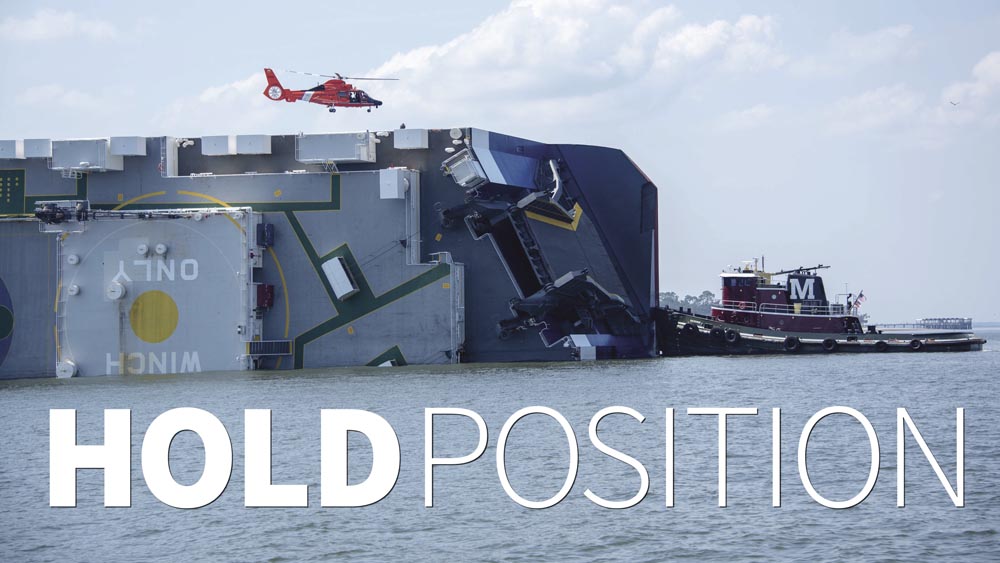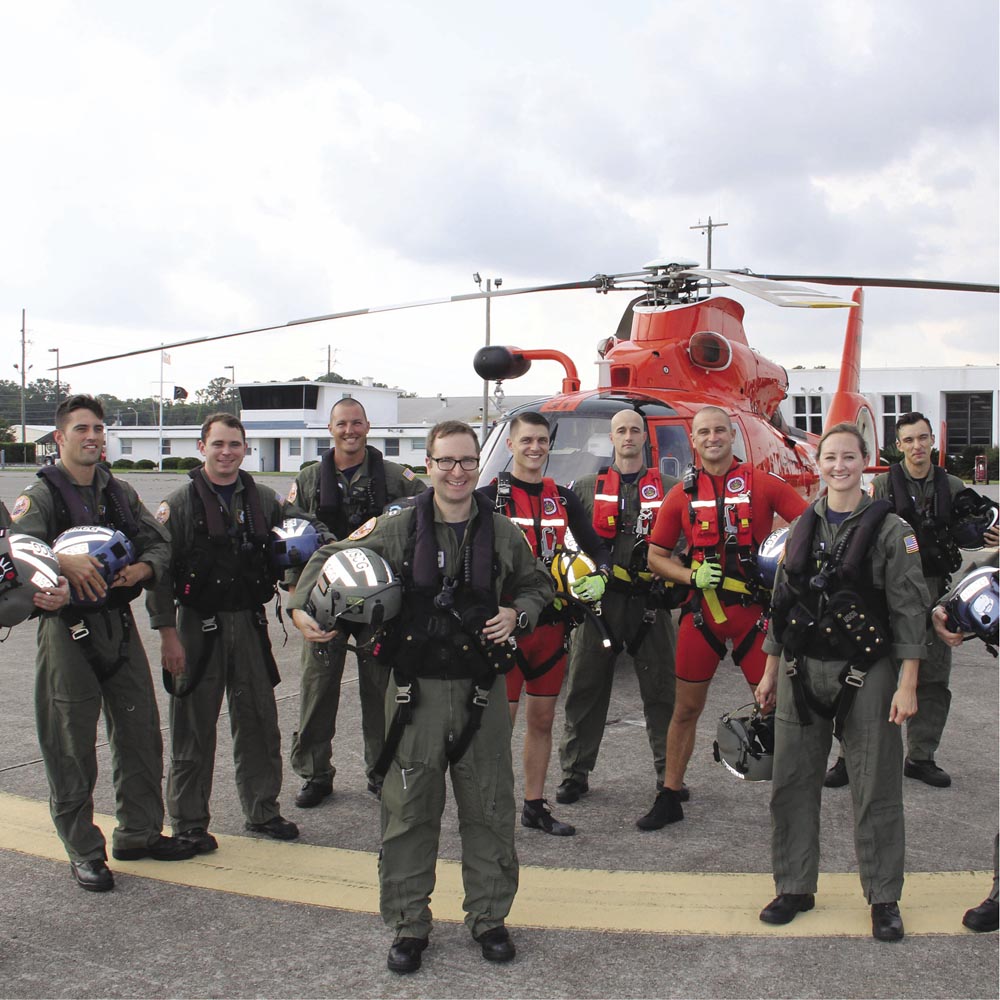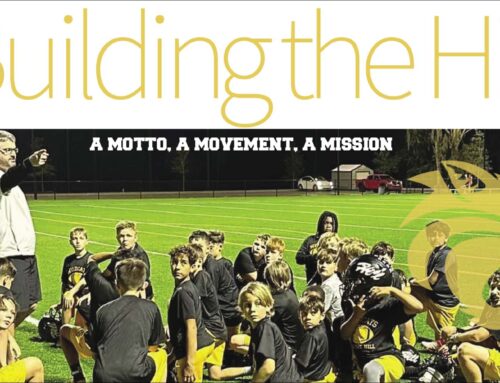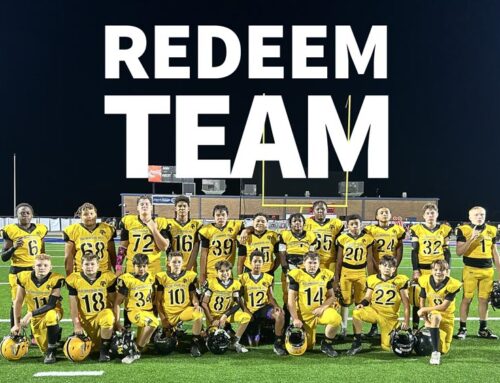
Hold Position
WORDS BY VICTOR R. PISANO

Two years ago, almost to the day, on a beautiful September night, an alert came in at the US Coast Guard Air Station Savannah at Hunter Army Airfield. It was a 2am emergency call to rescue.
But this was no ordinary alert. The call was a rescue mission involving a huge cargo ship in the process of capsizing in Brunswick Harbor just to the south. Current Coast Guard (CG) commander, Brendan Hilleary, explains, “It was a situation where everyone in our group was already prepared and ready—but they weren’t trained for a mission like this, this kind of case—this was different. Very different.” The Coast Guard servicemen stationed in Savannah jumped on the alert. “After the call came in, we were off the ground in less than 30 minutes,” says Commander Hilleary. “After that, it was about a 25-minute flight from Savannah.”
Every minute counted in this situation.
Just after midnight, Sunday, September 8th, 2019, a car carrier ship named the “Golden Ray” was preparing to ship out of the Port of Brunswick. The Golden Ray was a “RORO” car carrier, meaning “roll-on, roll-off.” Fully loaded, she was designed to carry and transport over 7,000 new vehicles—an ocean-going parking garage. On this night, she prepared to leave Brunswick, GA with just 4,200 vehicles, mostly compact Hyundai, Kia Tellurides, Ford Super Duty F-250s, Crossovers, and Mercedes SUVs, bound for the Middle East. The Golden Ray was setting out for Baltimore as her next port.
At three years of age, the Golden Ray was literally brand new—cleanly painted in a deep sky-blue and brilliant white. She was 17 stories high, 656 feet long, weighed 38,000 tons, and her tanks were at near full capacity at 300,000 gallons of diesel fuel. The Golden Ray was owned by Hyundai-Glovis, built and registered in South Korea, and sailed under the flag of the Marshall Islands. She had a crew of 23.
At 12:45am, on a rising tide, the Golden Ray brought on board a local “Harbor Pilot” to navigate the huge container ship out of port and into safe open water.
According to the investigational testimony of Harbor Pilot, Jonathan Tennant, “The Captain told me his ship was ready. It was a beautiful night in September. 72 degrees. I proceeded out of port and could see the moon and the Lighthouse on St. Simons.” Tennant then ordered a standard 10-degree turn of starboard rudder—but the ship started listing instead of turning. He tried to compensate the lean by ordering a counter 10-degrees then 20-degrees hard to port—the Golden Ray kept falling over. During his testimony, Tennant recalls shouting out, “What’s going on here? I’m losing her!”
Captain F. John Nicholl, a container ship captain with 17 years of experience helming ships of this size, offered his opinion of what most likely happened, “Ballast. It sounds like the 1st Mate and Captain didn’t fill the ballast tanks with enough harbor water to compensate for the heavier vehicles they took on in Georgia. The more fuel you use, the more ballast you need to compensate. It would be in the ballast logs.” The Coast Guard investigation recently concluded that the RORO carrier had taken on 1,000 metric tons of new cargo while just prior it discharged 1,500 metric tons of ballast water.
At this point, the Golden Ray was too far past her center of gravity and couldn’t be righted. She tipped over top-heavy into the narrows of the St. Simon’s channel. Tennant radioed out an emergency call. His distress signal first activated nearby attendant tugboats which swarmed to the capsizing ship like wasps on an intruder. The tugs lined up to literally “push” the Golden Ray out of the deep channel and onto a sandbar fronting St. Simon’s downtown pier. In the dark of night, with no lights, the massive ship slowly toppled over in the shallows and laid there on her side like a beached blue whale.

Within minutes, however, the Golden Ray lit back up—she caught fire. Twenty-three crew members and one harbor pilot were still on board. This is when US Coast Guard helicopters, boats, and rescue swimmers arrived and took over. They assessed the situation and set their positions. “When our rescue team got there, fires had already broken out and crewmen were still inside,” says Commander Hilleary. “It was a very dangerous situation for everyone involved, especially for the size of this rescue, the fire, and the nighttime conditions.”
In Coast Guard live-cam videos, the helicopter’s flight mechanic can be seen working the hoist cable and is heard communicating with his pilot in their own devised back-and-forth vocals: “Hold position.” (“Hold position”), “Easy left.” (“Easy left”). “Easy forward.” (“Easy forward”). “Hold position.” (“Hold position”)—all the while positioning the helicopter in response to hand signals from the CG rescue swimmers 150 feet below. Nineteen of the crew members of the Golden Ray were rescued this way. Four crew members, however, remained missing. Harbor Pilot, Tennant, and Captain, Lee, were among the first to be extricated. Pilot Tennant was safely lowered from the wheelhouse to waiting CG rescue boat below by ingeniously attaching him to a fire hose to extend the reach of the vertical drop.
The Coast Guard described the events that transpired that night in its meritorious citation to the rescue crew of that mission: “After expertly completing hoist recoveries from 150ft above the dark water, an explosion rocked the ship, sending plumes of black smoke skyward; the crew safely navigated the helicopter through the unexpected treacherous conditions.”
Once fires were contained, it took another 36 hours for contractors to cut through the hull of the Golden Ray to save the three trapped engineers and one other crewman. The crew had made it to “Shaft Alley,” a narrow corridor where the propeller shaft routes out from the stern of the ship. The four crew members were pulled out to the clapping of rescuers.
The clean-up is still ongoing. All 300,000 gallons of diesel fuel have been removed. The Golden Ray has been “chain-sawed” into eight equal sections, with only two rusted-out slices left for removal. Insurance claims could reach as high as $500 million. But, at the end of the day, no lives were lost in a most dangerous rescue mission. Credit goes to the quick response and courage of Coast Guard Air Station Savannah who, with expert prowess, “held their positions.”
We pay tribute to these rescue members of the United States Coast Guard Air Station Savannah:
- Lieutenant Commander
- Michael M. Vickers, USCG
- Lieutenant Jeb S. Slick, USCG
- Lieutenant Robert L. Mineo, USCG
- Lieutenant Junior Grade
- Maximillian S. Sherno, USCG
- Aviation Survival Technician First Class
- Eric F. Young, USCG
- Aviation Survival Technician Second Class Nathan E. Newberg, USCG
- Avionics Electrical Technician Second Class Joseph H. Kelly, USCG
- Aviation Maintenance Technician Second Class Jared T. Blitz, USCG















